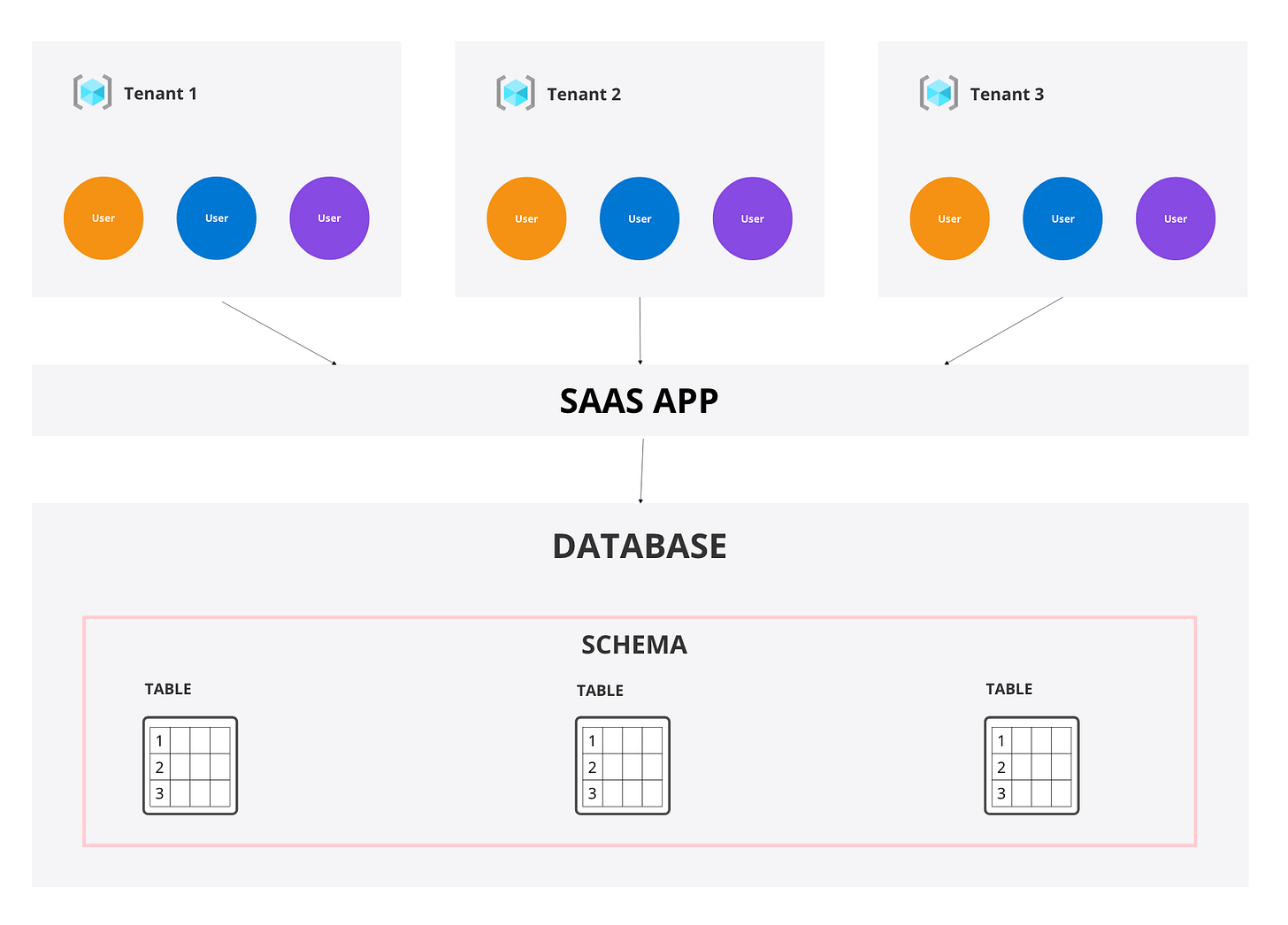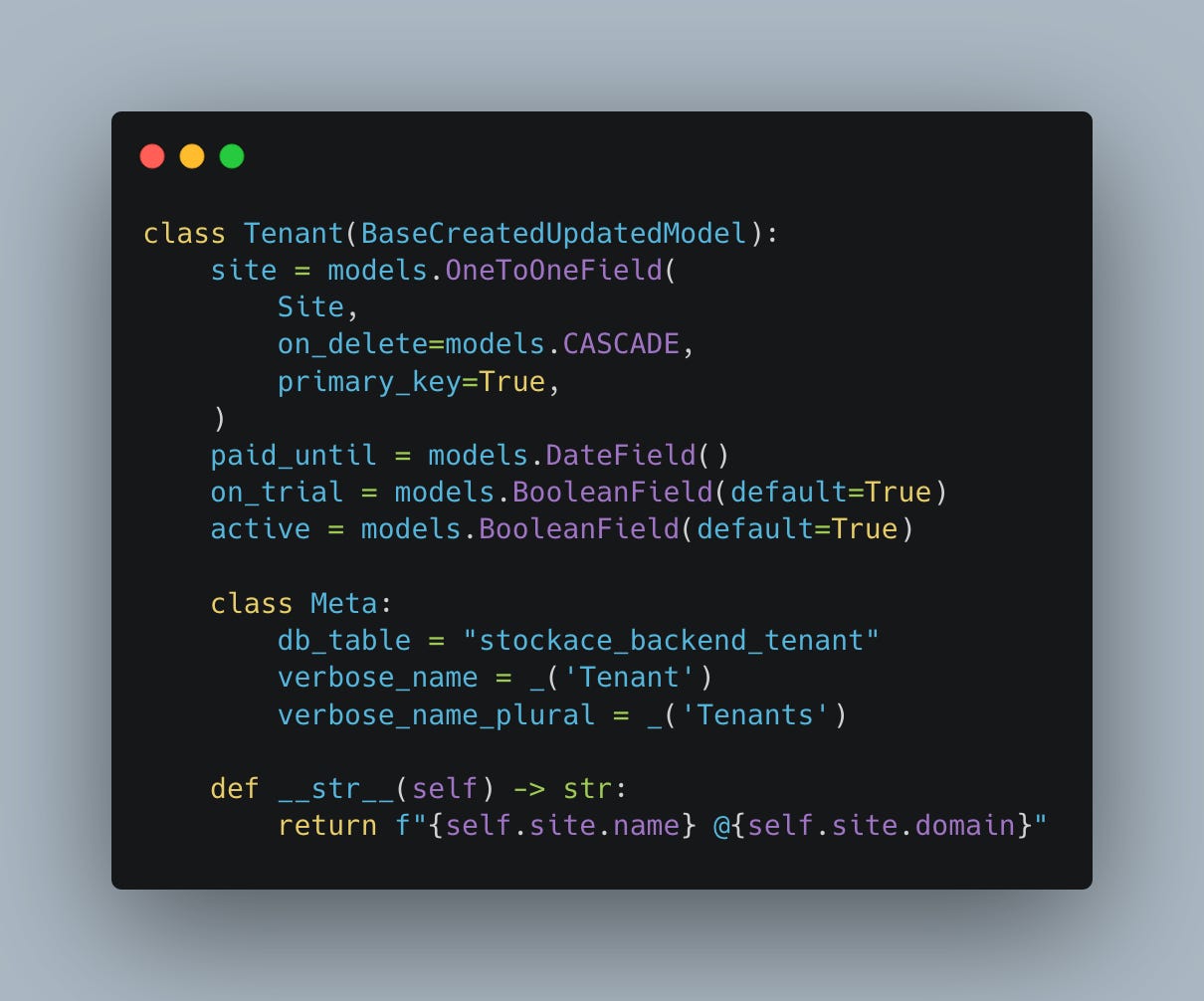Exploring Multitenant Architecture: Key Concepts, Persistence Strategies, and Comparative Analysis
What is a Multitenant Architecture?
Multitenant architecture is a software architecture that involves a single instance of the application but serves multiple clients or organizations. The idea of this type of architecture is to have a single code base that runs for all clients, with the same data structure, but with the data layer separated into different workspaces for each organization.
Persistence Options in a Multi-Tenant Architecture
Three options:
The first option is to have a database for each organization
The second option is to use the same database but provide each organization with its own table schema
The third option is for organizations to share the same schema in the same database
A Database for Each Organization
This is one of the primary approaches in implementing multitenant architecture. In this model, each tenant, which could be an organization or client, has its own separate database. This approach is distinct in that it provides the highest level of data isolation among the various multitenancy models.
Key Characteristics:
Isolation: Each organization's data is stored in a separate database. This ensures that the data of one organization is completely isolated from that of another, which can be crucial for meeting stringent security and privacy requirements.
Customization: With individual databases, there's more scope for customization. Each tenant can have a database schema that suits their specific needs, which might not be feasible in a shared database environment.
Maintenance: In terms of maintenance, updates or changes can be applied to one tenant's database without affecting others. This allows for more flexibility in maintenance schedules and reduces the risk of downtime for all tenants.
While this approach offers significant advantages in terms of security and customization, it can be more expensive due to the need for multiple database instances. It also poses challenges in terms of resource management, as each database may require its own set of resources (like server space and maintenance efforts). Despite these challenges, for organizations prioritizing data isolation and security, "A Database for Each Organization" remains a compelling choice.
Separate Schemas for Each Organization
In this design, the application connects to a single database instance. However, each organization has its own data schema. This approach is a middle ground between having a completely separate database for each organization and sharing a single database among all organizations.
Key Characteristics:
Single Database Instance: All the data for different organizations are stored in one database, but they are logically separated by using different schemas.
Data Isolation: Each organization's data is kept in its own schema, providing a level of isolation. This separation ensures that the data of one organization is not directly mingled with that of another.
Simplified Maintenance: Since there's only one database to manage, maintenance and updates are more straightforward. This can lead to reduced costs and complexity in database management.
Efficient Resource Utilization: Sharing a single database instance can be more efficient in terms of resource utilization compared to having multiple databases.
This model is beneficial for organizations that want to maintain a balance between data isolation and operational efficiency. It allows for a certain degree of customization and privacy, without the complexities and costs associated with managing multiple databases. However, it requires careful planning to ensure that the schemas are well-organized and that the shared database can handle the load of multiple tenants efficiently.
Shared Schema Across Organizations
In this approach, the data from all organizations are stored in the same tables within a single database. To differentiate and retrieve information specific to each organization, a unique identifier is assigned to each data entry, indicating its ownership.
Key Characteristics:
Unified Data Storage: All organizational data is consolidated in one set of tables, promoting a high degree of resource efficiency.
Data Tagging: Each piece of data is tagged with an identifier (like an organization ID), which acts as a marker to signify which organization the data belongs to.
Cost-Effectiveness: Since there's only one database and one set of tables, this approach can be more cost-effective in terms of storage and maintenance compared to maintaining multiple databases or schemas.
Simplified Operations: Managing a single database with a shared schema can simplify operations, as there’s just one system to monitor, back up, and update.
This shared schema model is especially beneficial for applications where high data volume and scalability are concerns. It allows for efficient use of resources and simplifies the IT infrastructure. However, it requires robust data governance to ensure data security and privacy, as data from different organizations are commingled. Additionally, careful design is needed to prevent performance issues, as the database scales and to ensure that queries are efficient and secure.
These models are a part of a multi-tenant Django application, where data is segregated by tenants (e.g., companies or organizations) using a shared database. Let's go through each model and its purpose:
1. Company Model
The Company model represents a company entity in your application. This model inherits from TenantAwareModel, indicating that it is tenant-specific.
2. TenantManager Model
TenantManager is a custom manager for handling tenant-related operations. It extends models.Manager.
_get_site_by_request: A helper method to retrieve the tenant based on the request's host. It uses a cache (TENANT_CACHE) to optimize performance.get_current: Public method to get the current tenant for a given request.clear_cache: Method to clear the tenant cache.
3. Tenant Model
The Tenant model represents the tenant entity in your system. It is linked to Django's Site model via a OneToOneField.
4. TenantAwareModel Model
TenantAwareModel is an abstract base class for models in a multi-tenant system.










